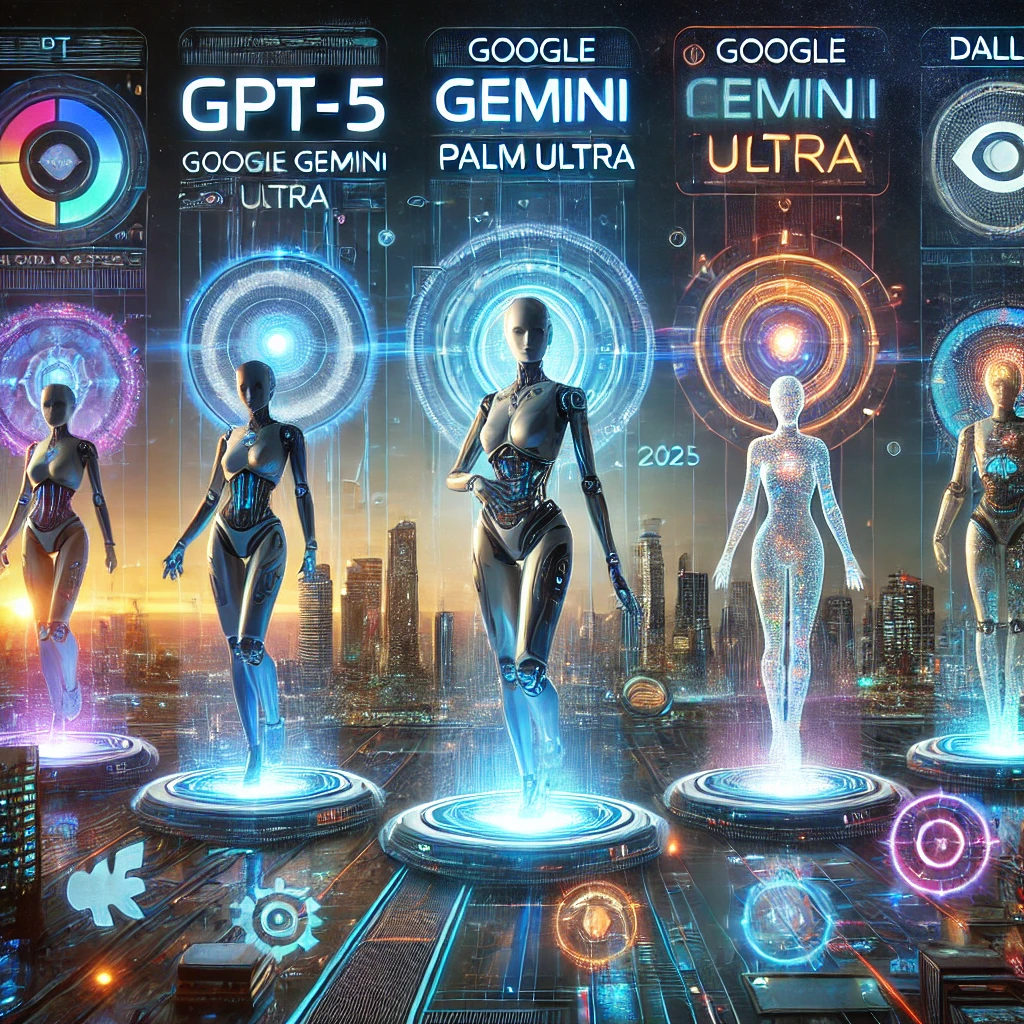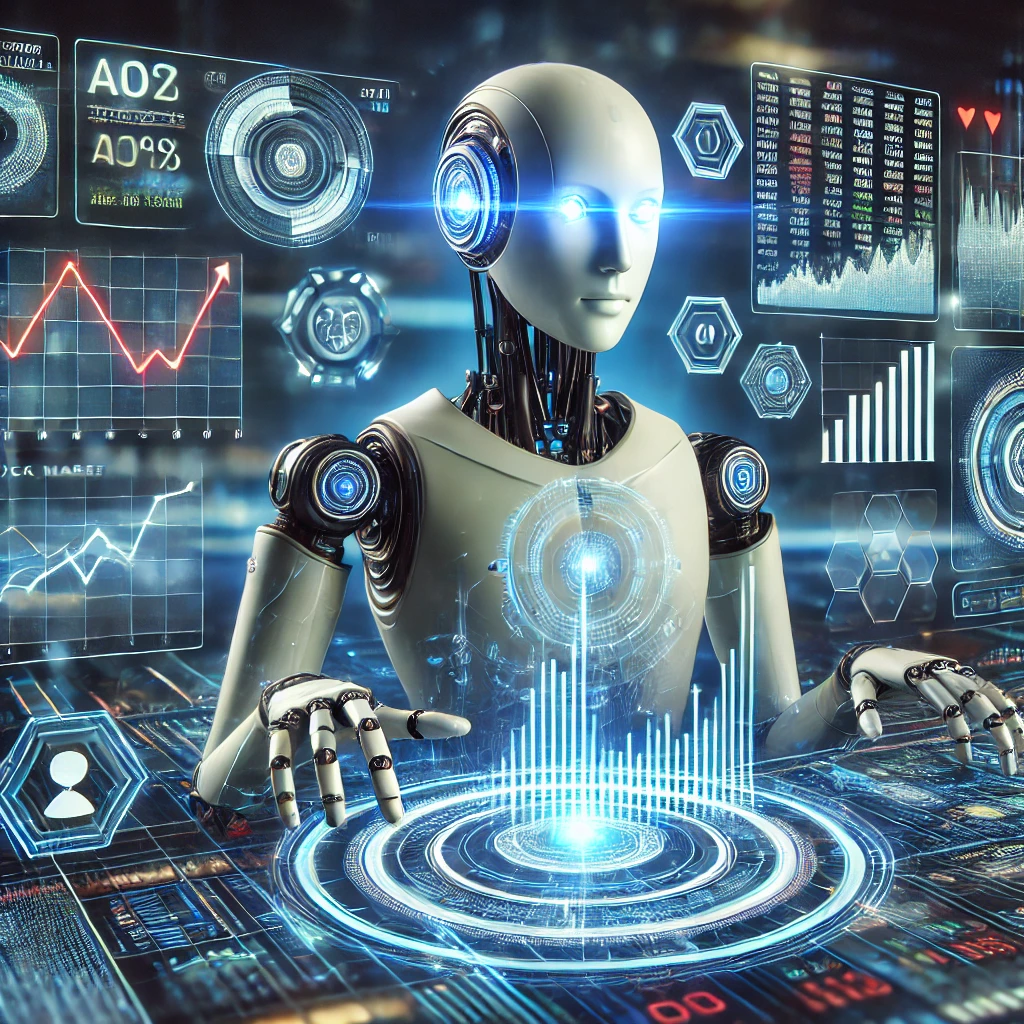
Artificial intelligence continues to evolve rapidly, and 2025 has introduced some of the most groundbreaking AI models to date. These models have redefined industries, from natural language processing to computer vision and autonomous systems. Here are the top five AI models of 2025:
1. GPT-5 by OpenAI
GPT-5 builds upon its predecessor with enhanced reasoning capabilities, better contextual understanding, and multimodal learning. With its ability to process text, images, and even videos, it has set new standards in AI-assisted writing, coding, and customer service applications. It also features improved efficiency, reducing computational costs while maintaining high performance.
GPT-5 introduces an advanced fine-tuning mechanism, allowing businesses to customize the model for specific industries, such as healthcare, legal, and finance. The model incorporates real-time fact-checking capabilities, reducing misinformation and ensuring higher accuracy in generated content. Its multimodal nature enables seamless interaction across different data types, making it one of the most versatile AI models ever created.
Additionally, GPT-5’s training data has been significantly expanded, ensuring more nuanced and contextually aware responses. The model is particularly beneficial in complex problem-solving tasks, providing detailed and well-structured responses. Companies leveraging GPT-5 report increased productivity and better automation in customer service and content generation workflows.
2. Gemini Ultra by Google DeepMind
Google’s Gemini Ultra is a next-generation AI model that excels in multilingual understanding, real-time data analysis, and adaptive learning. Unlike previous models, Gemini Ultra integrates advanced reinforcement learning, making it capable of self-improvement over time. It is widely used in finance, healthcare, and automated research.
One of Gemini Ultra’s most notable advancements is its dynamic adaptability. The model learns from real-time interactions and refines its approach to problem-solving, leading to a continuous improvement in output quality. Gemini Ultra is also integrated into Google's cloud infrastructure, offering businesses seamless AI-driven solutions for data analytics, predictive modeling, and cybersecurity.
Another key innovation is its ability to handle large-scale data processing without compromising efficiency. With enhanced security protocols, Gemini Ultra ensures compliance with global data protection regulations, making it a trusted AI solution in sensitive industries. Its predictive analytics capabilities are particularly valued in financial forecasting, medical diagnostics, and climate research, where real-time insights are crucial.
3. Claude 3 by Anthropic
Claude 3, developed by Anthropic, focuses on ethical AI development with strong safeguards against misinformation and bias. It offers superior interpretability, making AI decisions more transparent and understandable. With its human-like conversational abilities and strong adherence to AI safety principles, Claude 3 has become a trusted AI partner for businesses and researchers alike.
Claude 3 is designed with an emphasis on ethical AI, featuring a built-in auditing system that ensures transparency in decision-making. Unlike its predecessors, this model is trained with an explicit focus on minimizing biases and preventing the propagation of false information. It has been widely adopted by government agencies, research institutions, and corporations prioritizing responsible AI deployment.
In addition, Claude 3’s enhanced contextual understanding allows for deeper engagement in conversations, making it an excellent tool for virtual assistants and customer support systems. It also includes an interactive feedback loop, where users can provide real-time corrections to refine its responses further. This iterative learning mechanism has made Claude 3 one of the most adaptable and reliable AI models available.
4. PaLM 3 by Google AI
PaLM 3, the latest iteration of Google’s Pathways Language Model, has made significant strides in deep learning and reasoning capabilities. This model excels in processing large volumes of text while maintaining context and coherence, making it an excellent tool for research, legal analysis, and educational applications.
PaLM 3 introduces a hybrid architecture that combines traditional transformer-based networks with neuromorphic computing principles. This allows for faster and more efficient data processing, significantly reducing latency in real-time applications. Businesses leverage PaLM 3 for advanced chatbots, document summarization, and intelligent search functions.
One of PaLM 3’s standout features is its ability to seamlessly integrate with Google’s ecosystem, including Google Search, Assistant, and Workspace tools. Its expanded contextual memory also allows for more personalized and meaningful interactions, making it a favorite among enterprises looking for AI-driven automation solutions.
5. DALL·E 3 by OpenAI
DALL·E 3, the newest version of OpenAI’s groundbreaking image generation model, has revolutionized the way AI interacts with visual content. Unlike its predecessors, DALL·E 3 can generate hyper-realistic images with incredible detail and artistic control, making it a game-changer for designers, marketers, and content creators.
With a refined training dataset, DALL·E 3 understands complex artistic styles, historical references, and even specific user prompts more accurately than before. Its integration with GPT-5 allows users to describe intricate scenes in natural language and receive stunningly accurate visual representations.
Moreover, DALL·E 3 has introduced advanced features such as iterative image editing, where users can modify parts of an image through simple text commands. This has made it an invaluable tool in industries like advertising, game development, and virtual reality.
Conclusion
The AI models of 2025 are pushing the boundaries of innovation, offering unprecedented capabilities in natural language processing, data analysis, and automated decision-making. With a strong emphasis on customization, adaptability, and ethical AI, these models pave the way for even greater developments in the years to come.
As AI technology continues to advance, we can expect further improvements in multimodal learning, real-time adaptability, and ethical considerations. Businesses and researchers alike will benefit from these advancements, shaping a future where AI serves as a powerful and responsible tool for progress awcross all industries.
Author Liubomyr Vitol

 Apple can raise prices on iPhone through new US duties on Chinese goods
Apple can raise prices on iPhone through new US duties on Chinese goods Zuckerberg, Bezos, Musk and other richest people in the world lost $ 208 billion in one day
Zuckerberg, Bezos, Musk and other richest people in the world lost $ 208 billion in one day Hidden Markov Model for Trading Using Python
Hidden Markov Model for Trading Using Python